Iguanas are loved by most of us. especially if you like dinosaurs. There are many types of iguanas for pets that you can own.
However, they require a lot of care and responsibility to nurture them well and provide them with a good environment to live in and a healthy diet to ensure their healthy growth.
Contents
- What Are The Different Types Of Iguanas For Pets?
- Most popular Type Of Iguanas As Pets: Green iguana
- Where are iguanas from?
- Where do iguanas live?
- What Do Baby Iguanas Eat?
- What do adult iguanas eat?
- How long do iguanas live?
- How fast do iguanas grow?
- How big do iguanas get?
- Iguana shedding
- How much do iguanas cost?
- Tips for buying healthy Types of iguanas for pets
What Are The Different Types Of Iguanas For Pets?
Although iguanas are adorable creatures to be adopted, not all of them can be adopted as pets due to many reasons. Such as some of them require difficult living conditions while others are very rare to be found as they are about to be extinct and thus may be illegal to be kept.
Types of Iguanas Are Good As Pets
These species are the top iguanas in the list of top pet reptiles
- Green iguana and its morphs
- Desert iguana
- Angel island chuckwalla
- Rhinoceros iguana
Types Of Iguanas Are Worst To Keep For Beginners
These types of iguanas species are not recommended to be adopted as pets because of their decreasing numbers and for being endangered.
- Galapagos marine iguana
- Grand Cayman iguana
- Cayman Brac iguana
- Fiji banded iguana
- Spiny-tailed iguana
Most popular Type Of Iguanas As Pets: Green iguana
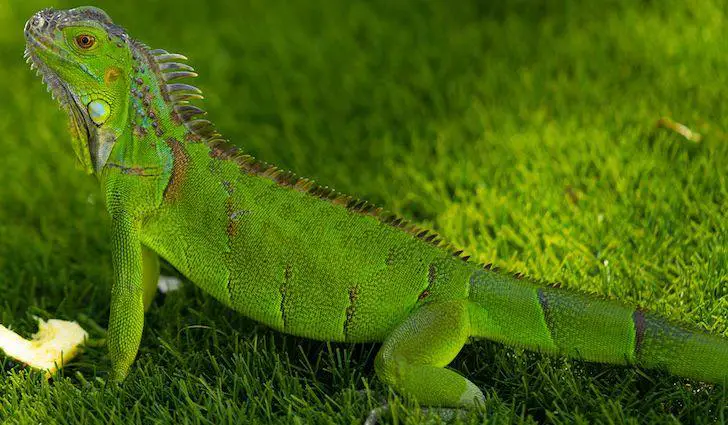
A green iguana is also known as American iguana. It is the most popular type of pet iguanas.
It is named green iguana since they turn green when they reach maturity.
But it can be found in many colors; lavender, pink, black, blue, and green. Green iguana loses its color during its growth. They are considered to be the largest species among the iguanas.
The Green Iguana Organs
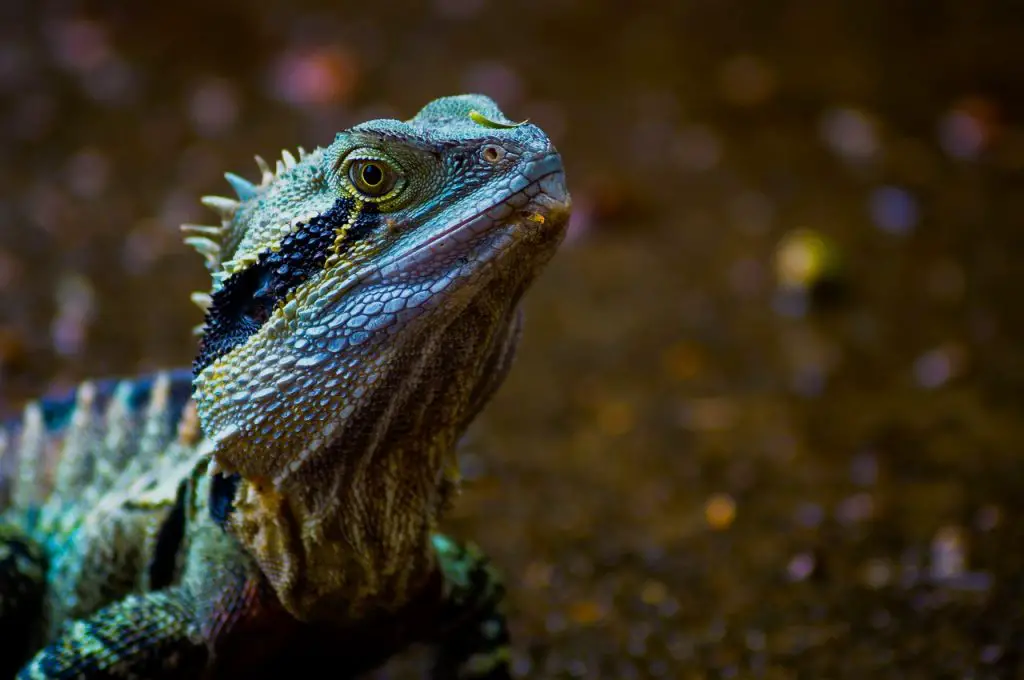
- Photo-sensory organ: green iguana has a third eye on the top of its head that works by detecting the light and dark changes allowing it to see enemies and escape from them
- Spines over the back and tail: to protect them from attackers
- Whip-like tails: used to strike enemies and be broken to help the iguana in escaping from enemies and then can be regenerated
- Dewlap: it helps in regulating body temperature
- Sharp teeth: leaf-shaped teeth that help iguana in cutting leaves apart
- Double–cone cells: these cells give the iguana a strong and sharp vision and help it in seeing ultraviolet wavelengths
- Lateral nasal gland: that helps green iguana in expelling excess k and NaCl salts
Green Iguana morphs
First albino: Albino Iguana (T-positive iguana)
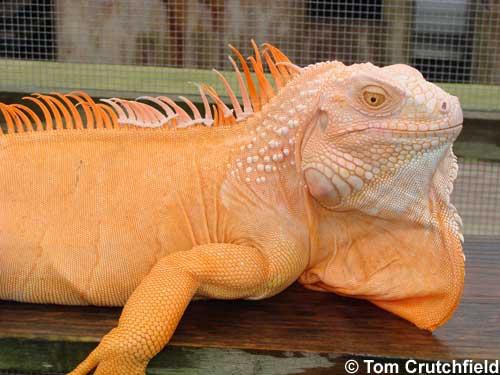
The Albino iguana is a green iguana, that has a color mutation; bright yellow and pink colors.
Being a morph from green iguana, Albino iguana is found at high prices as it is very rare.
If you like colors, this will be your best choice. It has amazing colors. And colorful marks are developed within its growth.
Second albino: Albino t-negative Iguana
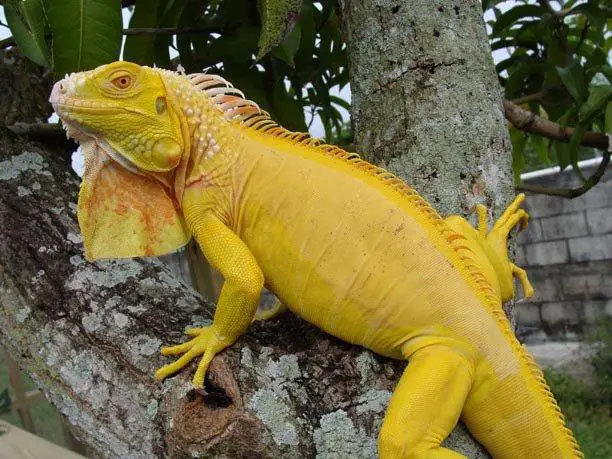
The albino t-negative species is one of the green iguana morphs.
This morph is rare, expensive, and hard to be found in the market. Its color ranges from yellow to peach. It differs from t-positive iguana in the pink stripes it has on its body
Hypomelanistic Iguana
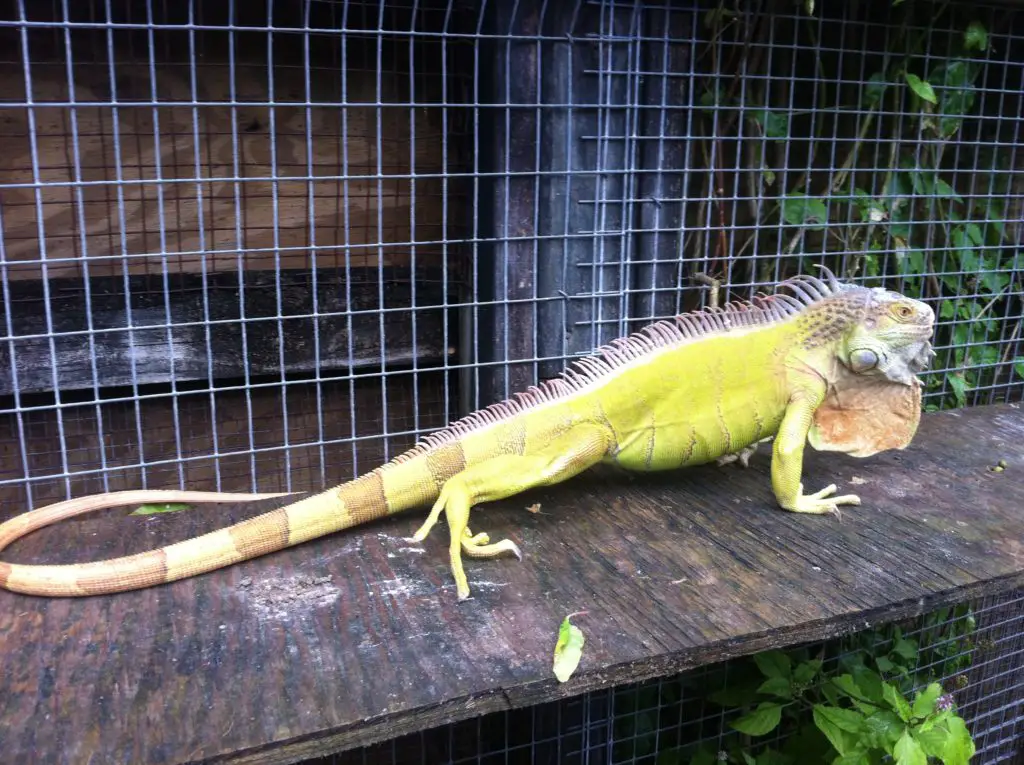
It is one of the green iguana morphs.it takes years to produce this morph. For this reason, it is so expensive. This iguana’s color is usually yellow. And sometimes red marks are found on its body
Blue Iguana
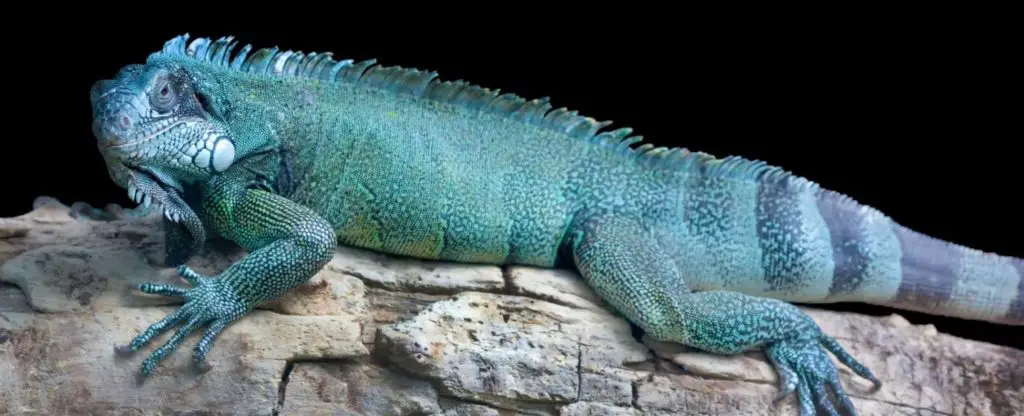
It is also known as the axanthic iguana. It is a turquoise colored green iguana morph that attracts you from long distances.
If you are willing to breed some unique and beautiful iguana morphs such as snow iguana, a blue iguana will be a perfect choice.
Snow Iguana
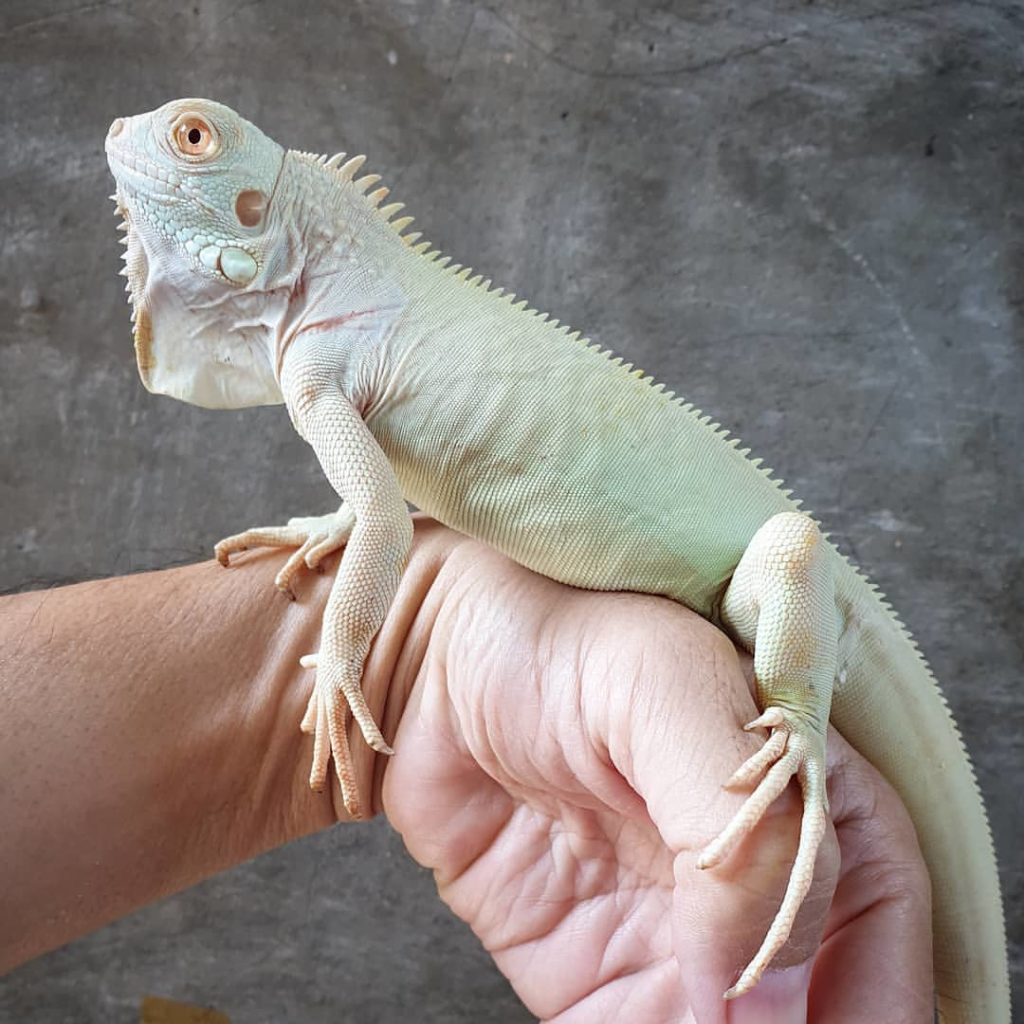
It is also called blizzard iguana. This is a morph iguana created from the blue iguana and the albino iguana. It has a beautiful white color that covers its whole body.
Red Iguana
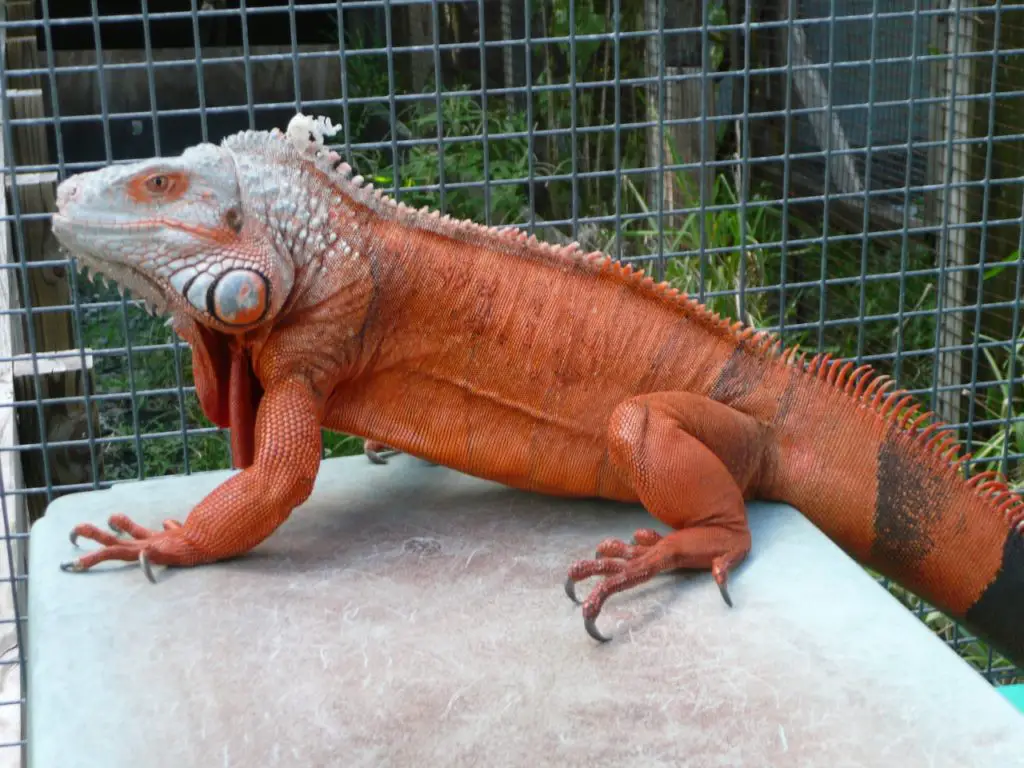
This is another morph of the green iguana. Its color ranges from red to orange with a green color on its stomach.
Sometimes, a red iguana may only have a redhead. Red iguanas can be found in Costa Rica.
Desert Iguana

They are medium-sized iguanas found in the USA and Mexico. It can grow up to 24 inches. Its color is commonly grey. It has a short-rounded head with a long tail and large back scales.
This type of iguana can tolerate high temperatures. Desert iguanas prefer to live in dry and sandy habitats. To find cool areas, they tend to climb bushes. And when they face any danger, they run to hide under them. So try to ensure some pushes in their habitat.
Angel Island Chuckwalla
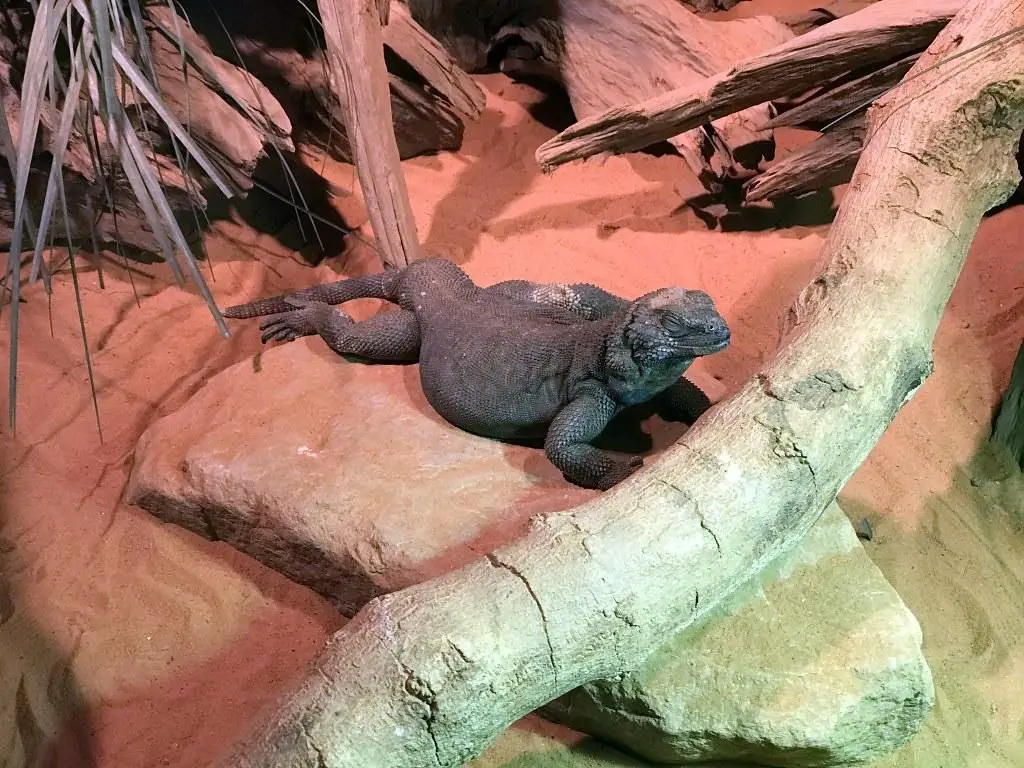
This type is known as spiny chuckwalla due to the spines covering its skin, which increase in the head and legs areas. It is one of the largest chuckwalla species. Angel island chuckwalla colors range from dark brown to black.
Angel Island Chuckwalla prefers to live in a rocky habitat. It causes no harm to humans as it runs away from threats and dwells in rocks. It was used as a source of food. Angel island chuckwalla communicates with each other using physical movements as; pushups, head-hopping, and mouth gaping.
Spiny-tailed iguanas
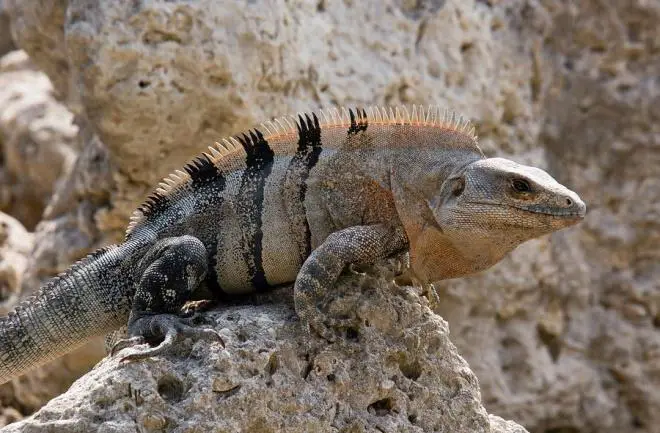
They live in hot and dry areas. Their numbers are decreasing because of hunting, hence they are protected by laws.
If you wanted to have it as a pet, try to buy the one that is already born in captivity and thus protects the wild ones. They range in sizes as their lengths vary from 10 inches to 5 feet.
They can live for a long time up to 25 years. Outdoor habitats are perfect for them as they love the sun and light. They are characterized by having black scales on the tail. Their colors vary from whitish-grey to tan with dark dorsal lines.
Types Of Iguanas For Pets
Relevant topic: worst lizards for starters
Galapagos marine iguana
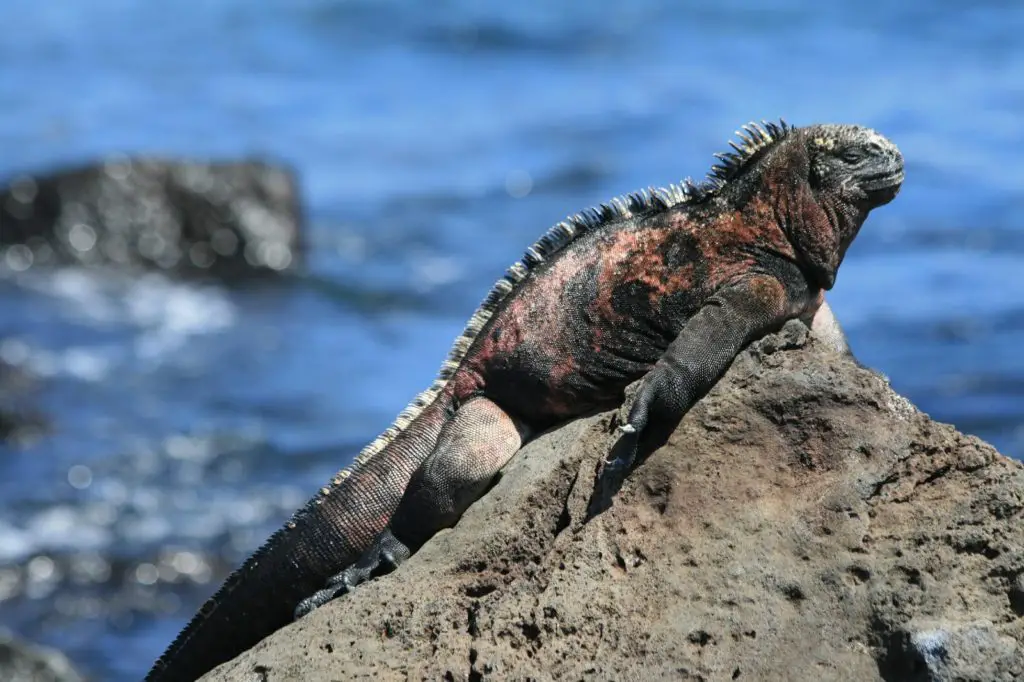
It is also known as the marine iguana or the sea iguana.
Its color is usually brownish-red from above and yellowish-orange beneath.
The maximum length of this species is up to 3-5ft.
It lives in groups on rocky shores. To get the heat required for warming, it lays on the volcanic rocks and gets the heat from the sun.
Fun fact: birds usually clean iguanas from parasites.
Males used to dive into the sea to find food. Marine iguanas were endangered, but a breeding program was done successfully to help in increasing their numbers.
They are hard to be found in the market as they are protected.
Grand Cayman iguana
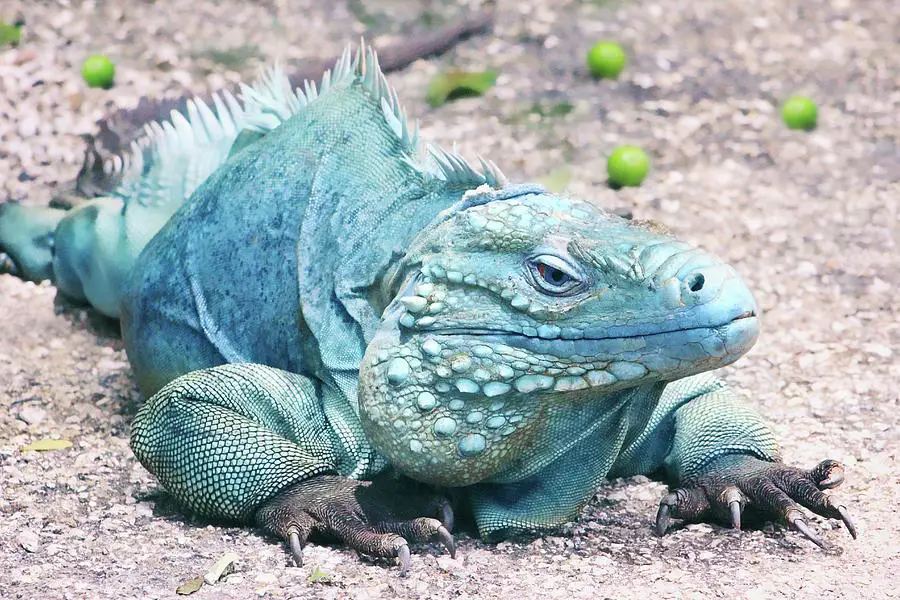
It is also known as the blue iguana. Being 5 ft. tall, it is considered to be one of the largest animals on Cayman Island. A blue iguana can live a long time; up to 70 years in some cases.
Blue iguana prefers to live in a rocky habitat. Its color varies from tan to gray. It has short dorsal spines. The reason why it is called blue iguana is that its color turns blue, to threaten other iguanas as a symbol of predomination. To save this species from extinction, blue iguanas have been gathered into a preserve in Grand Cayman.
A blue iguana can see motion and shapes from long distances.
Cayman Brac Iguana
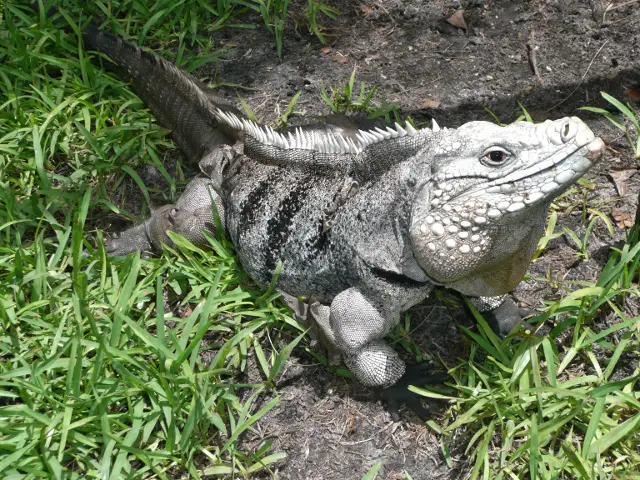
It is also known as the Lesser Caymans iguana. This type of iguana originally lives in south Cuba on the Cayman Islands. but it is endangered. And its numbers are decreasing because of the destruction of its natural habitat.
It is considered an average medium to a large lizard with a total length of 30-40 inches.
Its skin color is grey, which turns green at maturity. While the head color ranges from light-blue to pink. It has prominent dorsal crests and bigger femoral pores on the thighs. Lesser Cayman iguana’s diet consists mainly of leaves flowers and fruits.
Rhinoceros iguana
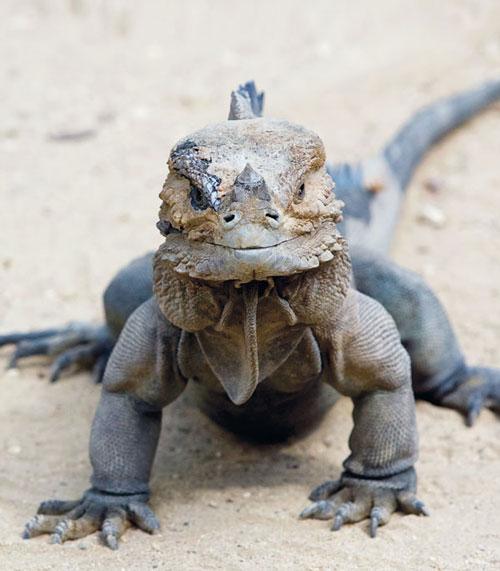
It is another endangered species that lives on the Caribbean islands. It reaches a length of 24 to 54 inches. The color ranges from gray to dark green. It is called rhinoceros due to pseudo-horn projection on its snout, which looks like the rhino’s horn, which is used to protect the iguana from hard rocks.
Rhinoceros iguana usually lives between rocks, which are covered by plants.it attacks by striking its tail or by biting.
Fiji banded iguana
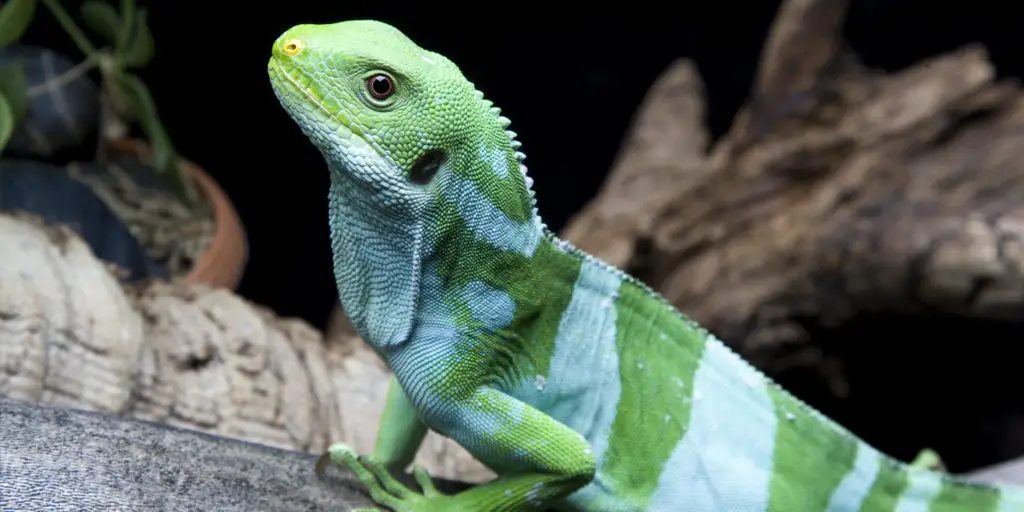
It is considered to be a diurnal lizard that lives on the Fiji islands. At night time, it lives in trees and spends its daytime basking and protecting its territory. It is found on Fiji island stamps and currency as it is considered to be a national treasure.
Fiji-banded iguana color is green with 2 or 3 light-blue bands and yellow color at the bottom. The skin color changes according to the background. They can reach about 24 inches in length and weigh about 200 grams. Its numbers are decreasing due to the destruction of the habitat because of fire, storms, and predators.
Where are iguanas from?
Being cold-blooded animals, Iguanas usually live in the tropical areas of the Caribbean, Mexico, south, and central America.
Iguana species | native origin |
| Green iguana | Southern Brazil, Paraguay, North Mexico, Caribbean islands, and Puerto Ricco |
| desert iguana | Sonoran and Mojave desert of the USA and California islands |
| Angel island chuckwalla | Guardian angel island in the Gulf of California |
| Galapagos marine iguana | Galapagos Islands of Ecuador |
| Grand Cayman iguana | Grand Cayman island |
| Cayman Brac iguana | Cayman Brac and Little Cayman islands in Cuba |
| Rhinoceros iguana | The Caribbean island of Hispaniola |
| Fiji banded iguana | Islands of Fiji and Tonga in the southwest pacific |
| Spiny-tailed iguana | Mexico and Central America |
Where do iguanas live?
Iguanas have many types, sizes, and shapes. So, different iguanas live in different environments. And they have different requirements and needs.
Habitats of different types of iguana
The green iguana is found in tropical rainforest areas, where it can find a lot of trees to climb, and easily hide in them. And warm itself with plenty of sunlight available.
Desert iguanas prefer to live in sandy and dry areas between the rocks and creosote bushes, which can be used as shelter. So, these areas are located in subtropical and tropical deciduous forests.
Angel island chuckwalla prefers to live in the arid areas, deserts, and rocky areas, where it can escape from its enemies.
Galapagos marine iguana prefers to live on the rocky shore and cliffs, where it can dive and find seaweed to eat and bask on the rocks.
Grand Cayman iguana lives in rocky, dry, and open regions found on shores and forests.
Cayman Brac Iguana prefers to nest in the sand of the beaches on Cayman Island. That’s why it is endangered because these nests are destroyed by rats and domestic animals.
Cayman Brac iguana prefers to live in rocky areas, which are found in coastal regions. But sometimes it can live in woodland and subtropical forests.
Fiji-banded iguana is a tree-dwelling lizard. They prefer to live in coastal regions and swampy forests. But, sometimes it lives in the rainforest area.
Spiny-tailed iguana climbing skills are very good. So it prefers to live between rocks, where it can bask and hide, near the trees.
What Do Baby Iguanas Eat?
It can be hard to take care of baby iguanas as they need to eat a good diet. In other words, baby iguanas need to eat two times throughout the day.
Baby iguana’s diet is mainly green leaves and vegetables. After feeding them, try to put them in the sun’s rays as these rays help them with metabolism. Additionally, you can add some food supplements, if needed.
These are some of the allowed food
- Coriander
- Zucchini
- Apples
- Alfalfa
- Fig
- Pumpkin
- Papaya
- Tomato
- Cantaloupe
And you should avoid these types of food
- Citrus fruits
- Brussels sprout
- Celery
- Beets
- Cauliflowers
- Meat
- Eggs
- Dairy products
What do adult iguanas eat?
A healthy diet results in a healthy iguana. Iguanas are herbivorous animals that eat plants and leaves. Most of the diet should be dark green leaves. An adult iguana should have a balanced diet that consists of green leaves, fruits, and vegetables, which are low in fiber and have high nutritional value.
Best leaves, vegetables, and fruits for feeding the iguanas
Green leaves and vegetables
- Mustard greens
- Turnip greens
- Broccoli
- Collard greens
- Beet greens
- Butternut squash
- Acorn squash
- Parsnip
- Carrots
- Bell pepper
- Peas
- Green beans
- Kale
- Dandelion greens
Fruits
- Strawberries
- Blueberries
- Bananas
- Apples
- Mango
- Cantaloupe
Tips for feeding your pet iguana
- Make sure the food is cut and chopped to make it easier to eat
- Iguana food can be found in the market, but you shouldn’t depend on that as a permanent diet for your iguana
- Add food supplements such as calcium to your pet food once or twice a week
- A bowl of water should be always present in the pet tank
- Don’t feed it insects or meat as this may harm its digestive system
- Avoid iceberg lettuce, celery, or any light-green leaves or vegetables as they are rich in fibers
How often do iguanas eat? and how much food should be given to your pet?
Baby iguanas need to eat on a daily basis or even twice a day while adult iguanas can be fed every day or every two days according to their habits and appetites. However, many books and articles say that it is better to feed your pet daily. Freshwater should be available at all times. It is also recommended to feed your iguana in the early morning as the sunlight helps with digestion.
Over-feeding your pet may result in many problems, including digestive problems. The amount of food introduced to your pet should be determined by the size, age, type, and appetite of your iguana. If it has finished eating, then don’t force it to eat more. If you are tackling any problem with your pet’s diet, you should consult an expert or a vet.
You should seek help or see a vet if you noticed one or more of these signs
- Loss of appetite
- Being inactive and loss of energy
- Seeing blood anywhere inside the habitat
- Vomiting or loss of balance
How long do iguanas live?
Most of the pet iguanas can live up to 10 years. However, a few can live up to 20 years. This depends on the care given by owners.
In the case of the wild iguanas, the life span of the iguana that lives in the wild depends on the species of the iguana and the environment it lives in. Some can live up to 25 years, while others can live up to 60 years.
How fast do iguanas grow?
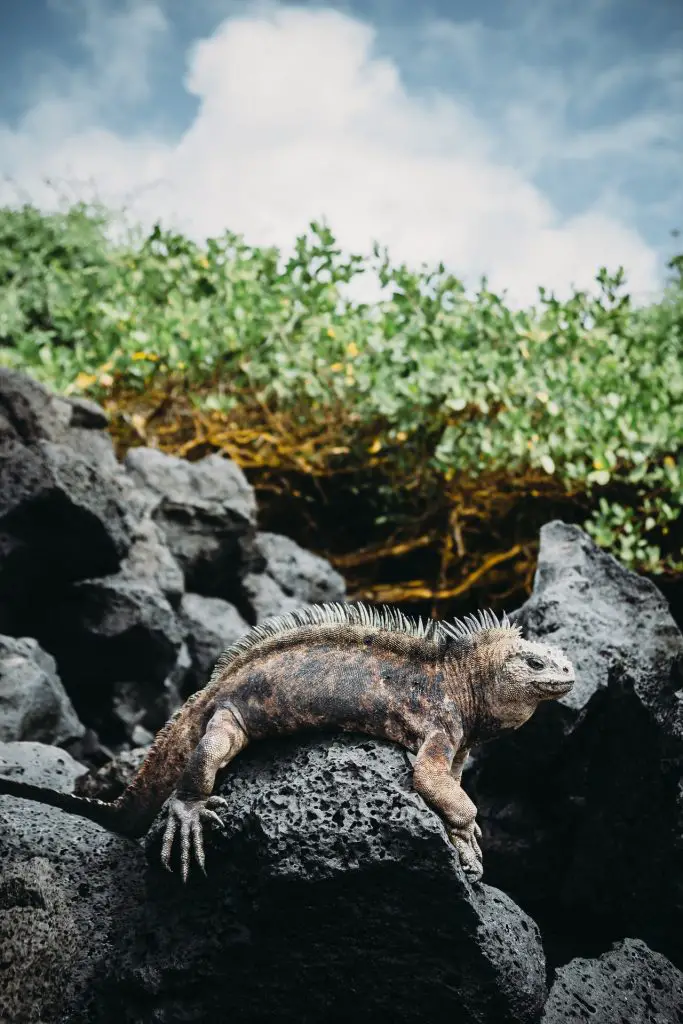
The growth rate of iguanas differs from one species to another depending on some factors such as;
- The environment they live in
- The food they are eating
- Genetics
In general, a normal iguana can take up to 3-7 years to reach full size. They grow really fast in the first 3-4 years. Then, the growth rate decreases. Bad care will result in an unhealthy iguana that is smaller in size.
Tips for a better growth rate and a healthy iguana
- Make sure to provide your iguana with a big cage
- Provide the UVB lights in the cage
- Don’t forget to give your iguana a food supplement but avoid overdosing
- The diet consists mainly of dark green leaves
- Remember to put a decoration that will help your iguana to exercise and have fun
How big do iguanas get?
Iguanas vary in size, shape, and color. The average size of the mature iguana ranges from 5 inches, such as the length of spiny-tailed iguana, to 7 feet, which can be achieved by the green iguana.
Iguana shedding
Most beginner pet owners ask these questions about iguana shedding:
Does iguana shed?
Shedding is a good sign of a healthy iguana. Iguanas like most of the reptiles shed, but unlike them, iguanas lose their old skin in pieces and not as a unit.
First, let’s talk about shedding. What is iguana shedding?
It is a natural process by which iguanas lose pieces of their old skin.
How often do iguanas shed?
Baby iguanas mostly shed every four to six weeks and unlike the adults, they lose all of their skin.
Adult iguanas shedding depends on the age and size of the iguanas. They may shed once a year or many times a year. Adult iguanas won’t shed their whole skin because this may result in a skin infection.
How to know that your iguana is about to shed?
- Firstly, dull skin is a clear sign that your iguana is about to shed as the normal skin color is shiny and green.
- Secondly, a sharp line is located between the falling skin and the skin near it.
Tips for helping iguanas in the shedding process
- Above all, a daily bath will help your iguana during the shedding process.
- When pulling off loose skin don’t force it as this means it is not ready to be shed.
- Add lubricant to any hard skin; this will help in the shedding process.
- Help your iguana shed in these areas; the skin around the toes, spines, eyelids, and mouth.
- Finally, put a tree bark for your iguana to help it in the shedding process.
How much do iguanas cost?
Iguanas’ prices can start from $20 to $600 according to their type, gender, size, and age.
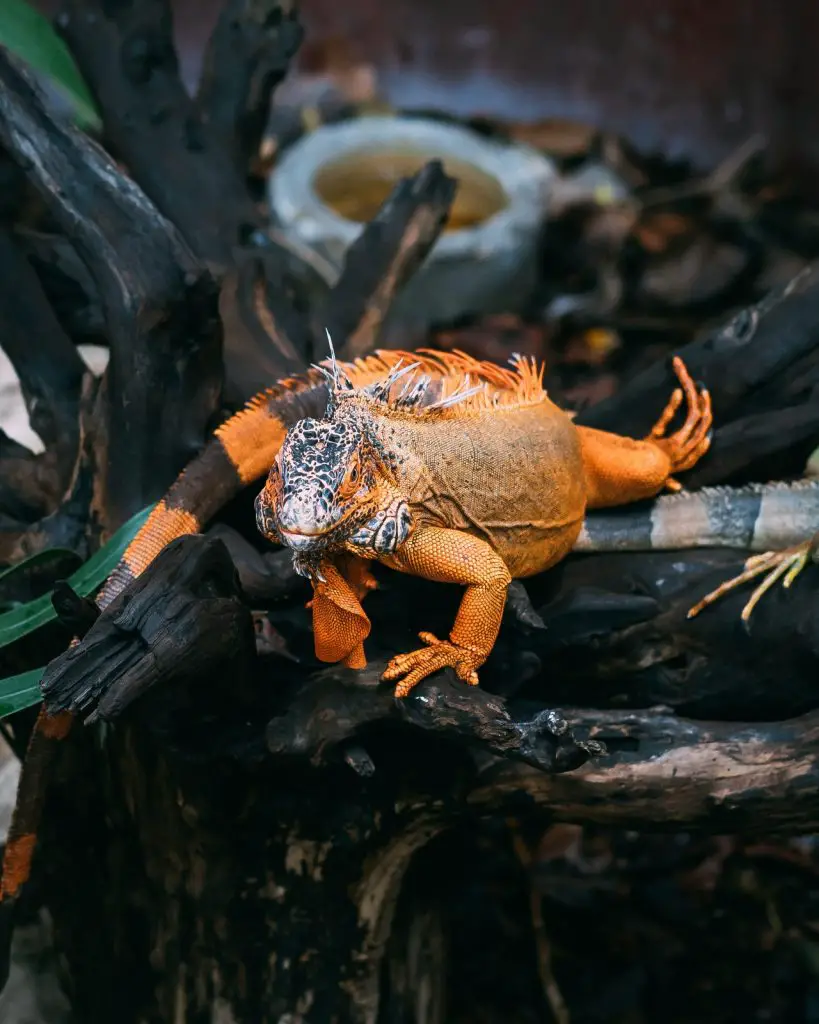
A table showing the average prices of different types of adult iguanas
| Types of iguanas for pets | Average price |
| Green iguana | $15 – $25 |
| Albino T-positive iguana | $3000 – $4000 |
| Axanthic iguana | $400 – $500 |
| Albino T-negative iguana | $10,000 |
| Red iguana | $400 – $500 |
| Hypomelnistic iguana | $2500 |
| Cayman Brac iguana | $800 – $900 |
| Grand cayman iguana | $1000 – $2000 |
| Rhinoceros iguana | $250 – $300 |
| Fiji banded iguana | $800 |
| Angel island chuckwalla | $300 – $400 |
| Galapagos marine iguana | $50 – $200 |
| Spiny-tailed iguana | $30 – $50 |
Tips for buying healthy Types of iguanas for pets
- Don’t buy any iguanas from a traveling seller.
- If you are going to buy the iguana from a pet shop, try to buy it as soon as the shipment arrives.
- Don’t buy more than one iguana.
- Find an iguana with shiny color.
- Finally, avoid inactive iguanas.
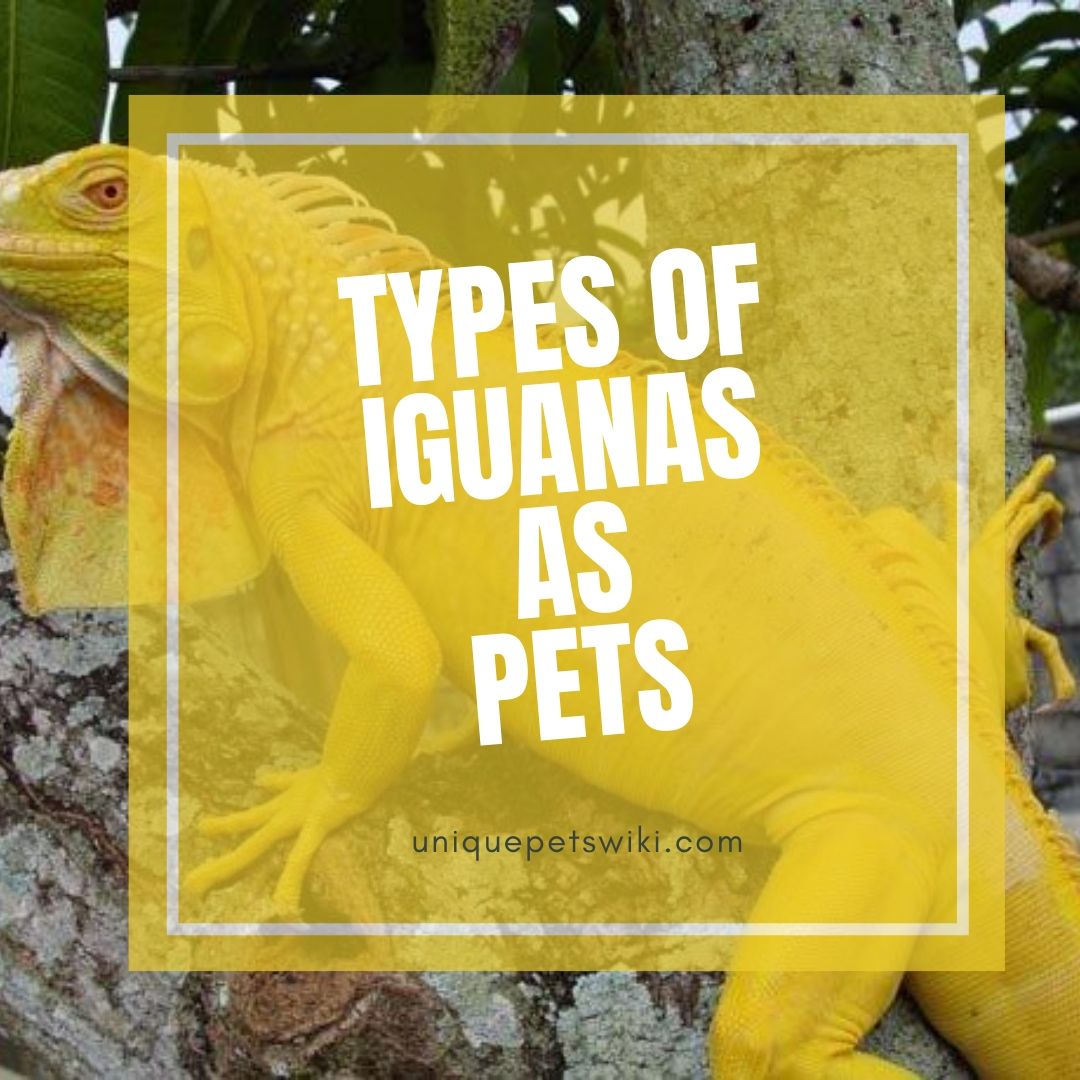
1 thought on “Types of iguanas for pets – Best and Worst Iguana List As Pets”